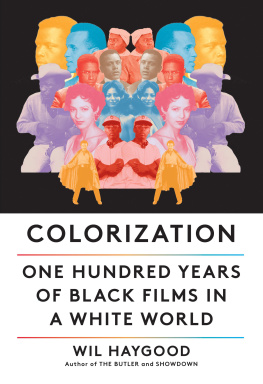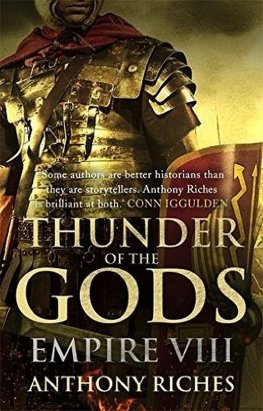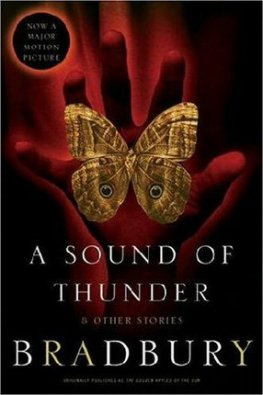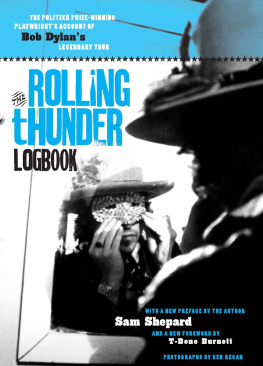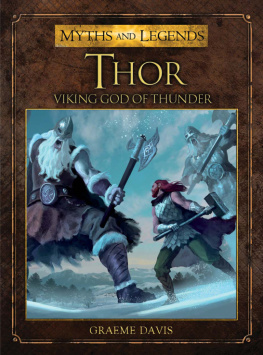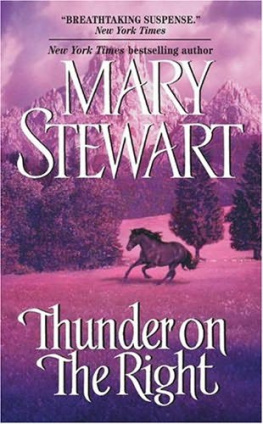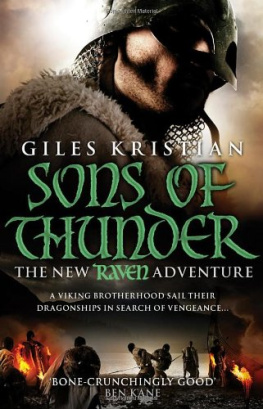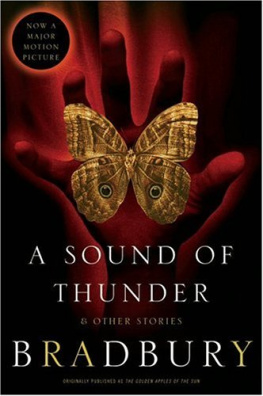Wil Haygood - Sweet Thunder
Here you can read online Wil Haygood - Sweet Thunder full text of the book (entire story) in english for free. Download pdf and epub, get meaning, cover and reviews about this ebook. year: 2009, publisher: Knopf Doubleday Publishing Group, genre: Detective and thriller. Description of the work, (preface) as well as reviews are available. Best literature library LitArk.com created for fans of good reading and offers a wide selection of genres:
Romance novel
Science fiction
Adventure
Detective
Science
History
Home and family
Prose
Art
Politics
Computer
Non-fiction
Religion
Business
Children
Humor
Choose a favorite category and find really read worthwhile books. Enjoy immersion in the world of imagination, feel the emotions of the characters or learn something new for yourself, make an fascinating discovery.

- Book:Sweet Thunder
- Author:
- Publisher:Knopf Doubleday Publishing Group
- Genre:
- Year:2009
- Rating:3 / 5
- Favourites:Add to favourites
- Your mark:
- 60
- 1
- 2
- 3
- 4
- 5
Sweet Thunder: summary, description and annotation
We offer to read an annotation, description, summary or preface (depends on what the author of the book "Sweet Thunder" wrote himself). If you haven't found the necessary information about the book — write in the comments, we will try to find it.
Wil Haygood: author's other books
Who wrote Sweet Thunder? Find out the surname, the name of the author of the book and a list of all author's works by series.
Sweet Thunder — read online for free the complete book (whole text) full work
Below is the text of the book, divided by pages. System saving the place of the last page read, allows you to conveniently read the book "Sweet Thunder" online for free, without having to search again every time where you left off. Put a bookmark, and you can go to the page where you finished reading at any time.
Font size:
Interval:
Bookmark:
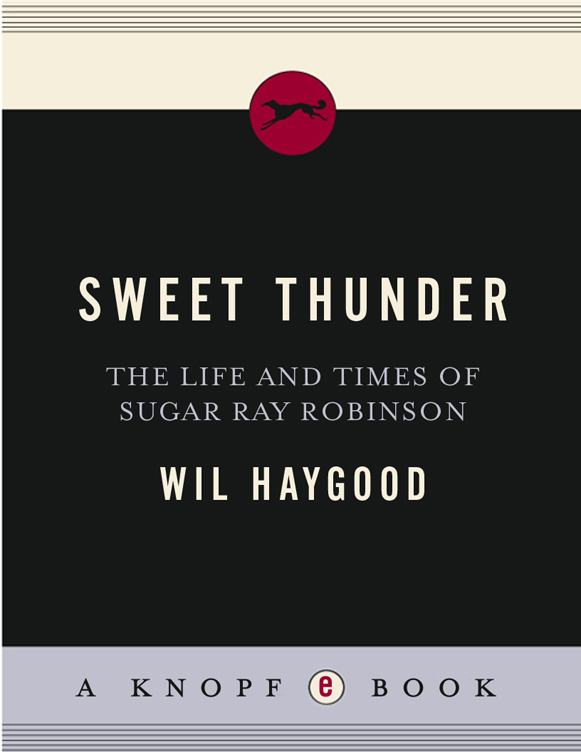
Also by Wil Haygood
In Black and White:
The Life of Sammy Davis, Jr.
Two on the River (photographs by Stan Grossfeld)
King of the Cats: The Life and Times of
Adam Clayton Powell, Jr.
The Haygoods of Columbus:
A Family Memoir
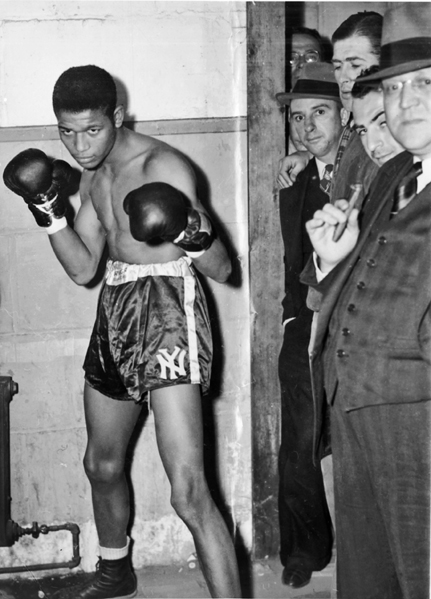
Watertown, NY, 1937: Sixteen-year-old Walker Smith Jr. so dazzled the audience that Jack Case, the legendary local sports editor (holding cigar) became an instant admirer. Case saw to it that Smith left town with a new name: Sugar Ray Robinson.
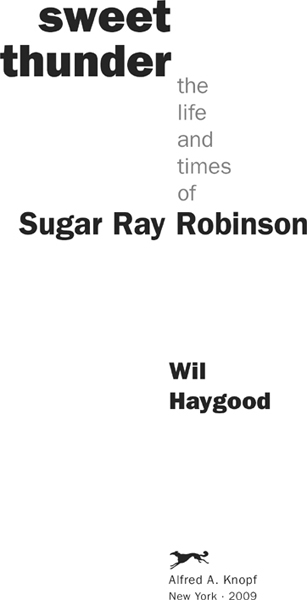
for Phil Bennett, Peter Guralnick, and Greg Moore
cornermen supreme
All his life the great prizefighter would stare with deep wonder and searching upon this constantly moving cavalcade. It was that world outside the ring that snared Sugar Ray Robinson, the world where beauty and grace held a potent sway. He leaned into Lenas voice and studied Langstons poems. He tried explaining to Miles that their respective artistries had much in common, believing that the trumpet and fighting gloves shared similar mysteries.
As the American calendar kept rolling over the emotional headlines of the forties and the dangerously quiet fifties, a part of the world was spinning in a singular rhythm all its own. From private home to nightclub, from lodge to auditorium, there was a gathering of caramelized and brown and black faces. Sepia dreamslovely, spilling forth at nightwere everywhere, thousands captured in their net. These dreams could not escape segregation, or the laws of the land. But still, art poured from their conditional existence, like music lyrics written on a windowpane.
That would be Billy Eckstine (the sepia Sinatra, they called him) sitting in the chair at Sugar Rays hair salon. The salon sat next to the prizefighters Harlem nightspot, called Sugar Rays. His name glowed in red neon cursive lettering atop the awning. The long mahogany bar hosted the famousstarlets, comics, jazzmen, politicians, crooners. The gangsters behaved themselves. And Sugar Ray loved every minute of it. Tapping his feet, fingering his money clip. Why, he loved this world so much there were times he wondered if it just might overtake his primary line of work. Which was delivering pain and causing blood to flow.
round midnight
HE IS SUCH A NOCTURNAL FIGURE. Rarely does he rush aboutmoving, instead, as if in some kind of ether. Even on those days when thousands upon thousands leave their Manhattan homes for Madison Square Garden to see him under the klieg lights or for Yankee Stadium to watch him beneath moonlight, the great Sugar Ray Robinson stirs gently. His work evenings begin around nine oclock. By midnight he is finished with his work inside the ring, though sometimes, of course, it ends much soonera first- or second-round knockout. In Boston in 1950, at the end of the fifth round in a fight with Joe Rindone, Robinson turned to Nat Hentoff, a young reporter at ringside, and mentioned that he hoped the TV audience was enjoying the fight.
This fight isnt on TV, Hentoff told Robinson.
What? Robinson snapped, disappointed.
And so, recalls Hentoff, he went and knocked the guy out the next round.
Time to stir.
Huge crowds gather to see him after the fightsafter yet another great battle with Jake LaMotta, Carmen Basilio, Gene Fullmer. But he is known for lingering in the dressing room. He travels with a personal valet. Appearance is everything to him: His suits are hand-stitched on Broadway by tailor Sy Martin. (Sy does tailoring for Duke Ellington and a lot of Hollywood stars.) Finally, there he is, and the members of the crowd reach out to himnewsmen, autograph seekers, gangsters. Only after he has satisfied them is he free to take to the night, authoring a stylecosmopolitan, jazz-touched, elegantunique to the midcentury fight game. In France they respect his power, but truly love his style.
Scores of admirersmany of them habitus of Broadway and Manhattan literary salonswill trek to his rural training camp at Greenwood Lake, New York. He often runs alone, mountains in the distance, a solitary figure sweeping across land once trod by the Iroquois. He looks good in the morning light. Vermeer would have loved him. His nightclub was on 124th Street in Manhattan. That boozy and golden Hollywood couple, Elizabeth Taylor and Richard Burton, would sit for hours sipping champagne, devouring heaps of collard greens. (In 1968 Burton starred in a movie, Candy, a sexual satire noted for nothing in cinema history save its eccentric cast: Burton, Marlon Brando, Walter Matthau, James Coburn, and a cameo by Robinson. Burton cast Robinson because he respected legends; Robinson did it for the money.)
Those who have watched him in the ring get as much pleasure, it seems, watching him outside of italighting from his flamingo-colored Cadillac down at the Manhattan pier, embarking for Europe on the Libert ocean liner, smiling from the pages of Life magazine in white tie and tails. Because it is America, and he is a black man, and it is a time of fierce segregation and racial polarization, there are always two drama-laden ghostsJack Johnson and Joe Louislooming up at him. The public acclaim for heavyweight champions Jack Johnson and Joe Louis had often been seen through the splintering and consuming twentieth-century prism of race, but it was not so with Robinson. He declined that war and enlisted in cultural enlightenment, laying claim to a different piece of cultural terrain. He sought to force a new sensibility in the way we view athletic accomplishment and society. He was the first black athlete to largely own his own fighting rights, and the first to challenge radio and TV station owners about financial receipts. Unlike Johnson and Louis, he negotiated his own independence, constantly battering back the belief that the athleteespecially the Negro athletewas an uninformed machine. He simply wished the world to see him as larger than the contours of the ring. So while the champagne slid down his throat, he measured the barriers hed slip through and plotted his entre into high society.
He believed business acumen would make him whole. But there was something elsestyle. His name pops up on best-dressed lists; he is a pal to jazzmenDizzy Gillespie, Count Basie, Nat King Cole, Billy Eckstine among them. In the autumn of 1952, he will abandon boxing and turn to the world of entertainment. He will headline his own stage show, traveling with the likes of Count Basie and Cootie Williams; Cootie is an old Ellington standby. Sugar Ray plays piano and drums, and practices his tap dancing until drenched in perspiration. Style is as much a mystery as the cosmos.
Sugar Ray Robinson was the first modern prizefighter to take culturemusic and grace and danceinto the ring with him. He had convinced himself that style was as much a discipline as boxing. That he dominated both, for so long, causes the world to marvel. Before the headlines of Selma and Montgomery and Little Rockhe followed the Little Rock crisis that day in 1957, full of pain at reports of the little Negro children being verbally assaulted and pelted with rocks; hed suffer a rare loss that very nightbefore all the marches, before it seemed as if a new America had just dropped from the sky right onto the old ones front porch, there was another America and it swirled in its own lovely mist. And a good amount of that swirling could be seen in the long glass mirror of Sugar Ray Robinsons nightclub. A jazz-age architect designed the place. Its red neon lettering out front allowed the name of the club
Font size:
Interval:
Bookmark:
Similar books «Sweet Thunder»
Look at similar books to Sweet Thunder. We have selected literature similar in name and meaning in the hope of providing readers with more options to find new, interesting, not yet read works.
Discussion, reviews of the book Sweet Thunder and just readers' own opinions. Leave your comments, write what you think about the work, its meaning or the main characters. Specify what exactly you liked and what you didn't like, and why you think so.

